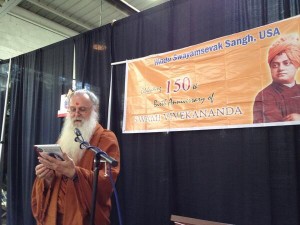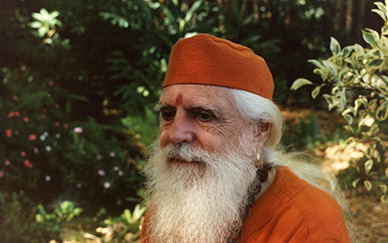Bodhinatha Travels

Satguru Bodhinatha, Shanmuganathaswami and Siddhanathaswami have recently left for a journey around the country, to participate in satsangs, visit devotees and temples, and end their journey with the Aloha Luncheon. They first flew to Chicago, IL and then to Syracuse, NY followed by Jacksonville, FL. Next they'll fly to Houston, TX and then to Los Angeles, CA and finally to San Francisco, CA.
Bangalore Stone Carving Update

Here is the work in progress for the center portion of the perimeter wall, where the etching of the Vedas is inscribed. Very intricate carving is to be done for this section. Here we can see that the initial carving is in progress.
Twitter Update: After successful Dharma Yoga Fests yesterday, two…
September 14 Homa

This morning, the monks of Kauai Aadheenam observed their weekly homa in Kaduval temple. With Satguru Bodhinatha and four other monks traveling, including Sadasivanathaswami, Paramacharya Sivanathaswami filled in to burn prayers in the fire and to give a short talk. He discussed the power of mantras and mantra diksha, and then gave an explanation of the higher dimensions of consciousness.
Twitter Update: Paramacharya Sadasivanathaswami is speaking at the…

Ganesha Chaturthi Dance Performance
Twitter Update: Today we are enjoying the company of four swamis f…
Ganesha Chaturthi

Yesterday the monastery celebrated Ganesha Chaturthi with a puja and abhiskekham in Kaduval temple. After the puja, monks and devotees paraded to the river to submerge the handcrafted clay Ganeshas in the sacred waters, symbolizing Ganesha's release into universal consciousness.
Ganesha Chaturthi, also known as Vinayaka Chaturthi, is the festival day celebrating the birth of Lord Ganesha. One of the great national festivals of India, and the foremost annual festival to Ganesha, it is celebrated on the chaturthi or "fourth day" after the new moon in the Tamil month of Avani (August-September). We decorate the temple and home shrine with banana leaves, sugarcane and strings of mango leaves, making it look like a small forest. We bring baskets of fruits and sweets, especially modaka balls, and place them before the sanctum of Lord Ganesha. He receives special pujas throughout the day and often a festival parade. Each year we obtain or make a small or large soft clay image of Ganapati and use it for worship at home for two to ten days after Ganesha Chaturthi. Pandit Arunachalam notes: "In Karnataka, India, young people make a ritual of seeing 108 Vinayakas on this occasion, so they go about visiting their friends' and relatives' houses on this day. The worship of Ganesha on this day is supposed to confer advancement in learning to the young student and success in any enterprise undertaken" (Festivals of Tamil Nadu, p. 110-121).
Sri Arunachalam continues with a description of the Chaturthi Puja itself: "The worship, or puja, is done as usual, towards the close of the forenoon. The whole house and the entrance are decorated with kolam. Festoons are hung around the place of worship, making it into a sort of decorated mandapam, or hall. Tender coconut leaves, split and artistically designed, white in color, mango leaves dark green, lilies in white, and pink and crimson festoons present a colorful appearance. The newly made clay image is placed facing east in a convenient place in the northern part of the house on a pedestal decorated in kolam design of an eight-petalled padma (lotus flower). On the padma a small quantity of paddy (uncooked rice) is spread, and the Ganesha image is placed on it over a plantain leaf. Only white flowers are used for the worship. Aruhu and erukku are special favorites. Then all the puja rituals are gone through fully.
"Besides, the fruits of the season, such as the wood apple and jambu (naval), are also offered in plenty along with the customary plantain fruits and coconuts. Usually in the rural parts, a puja is performed again the next morning or noon (punarpuja) with fresh food offerings. In the evening, the Ganesha image is carried by the boys, along with the flowers, and consigned to a running stream or to a good water pool or tank. So, Ganesha who was shaped out of the earth, is now returned to the same earth." This is a day for rejoicing and for seeking the blessings of the Lord of Obstacles to bring wealth and success into our life.
From Our Gurus' Teachings
Archives are now available through 2001. Light colored days have no posts. 1998-2001 coming later.



